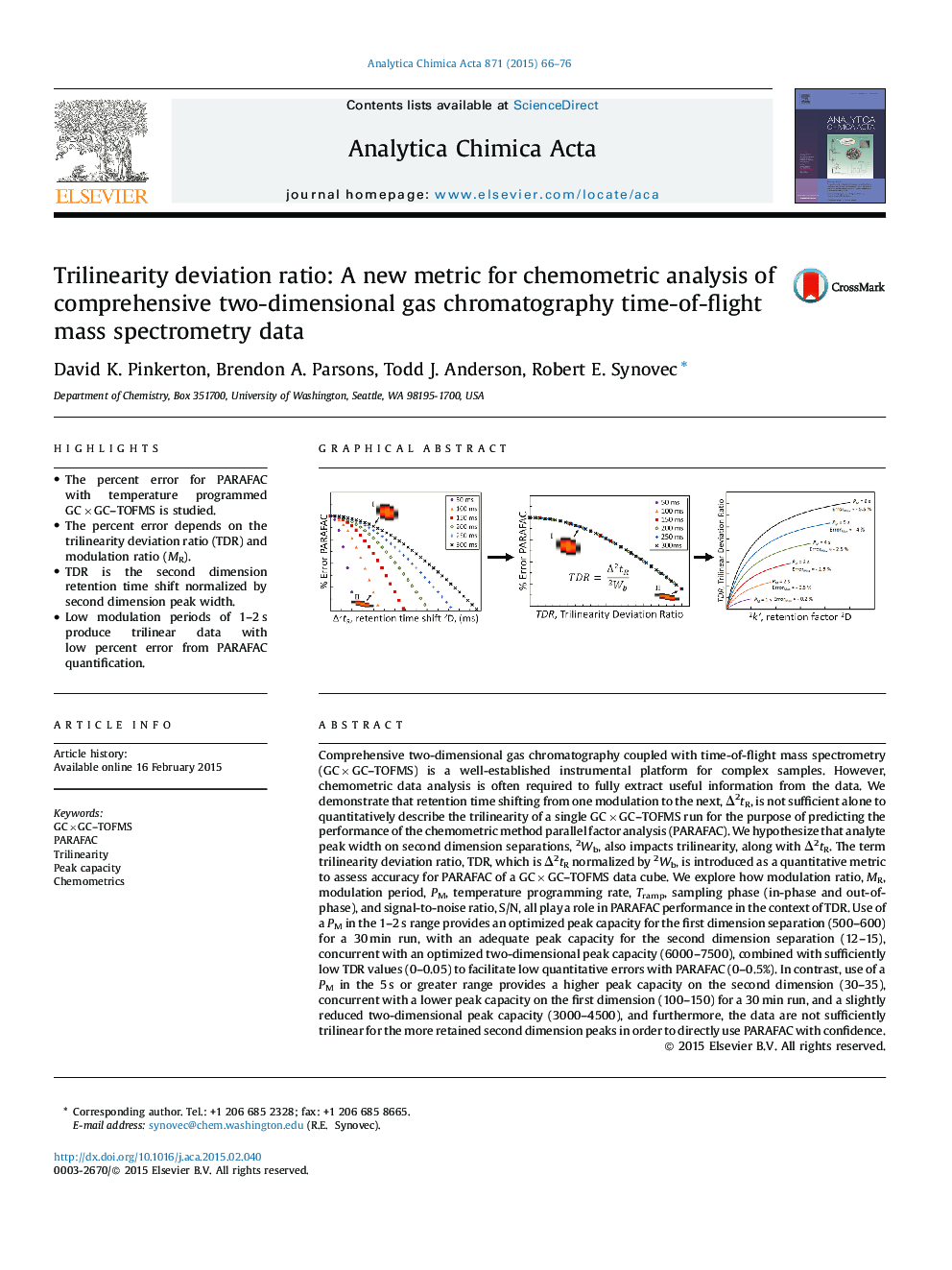| کد مقاله | کد نشریه | سال انتشار | مقاله انگلیسی | نسخه تمام متن |
|---|---|---|---|---|
| 1163899 | 1490961 | 2015 | 11 صفحه PDF | دانلود رایگان |

• The percent error for PARAFAC with temperature programmed GC × GC–TOFMS is studied.
• The percent error depends on the trilinearity deviation ratio (TDR) and modulation ratio (MR).
• TDR is the second dimension retention time shift normalized by second dimension peak width.
• Low modulation periods of 1–2 s produce trilinear data with low percent error from PARAFAC quantification.
Comprehensive two-dimensional gas chromatography coupled with time-of-flight mass spectrometry (GC × GC–TOFMS) is a well-established instrumental platform for complex samples. However, chemometric data analysis is often required to fully extract useful information from the data. We demonstrate that retention time shifting from one modulation to the next, Δ2tR, is not sufficient alone to quantitatively describe the trilinearity of a single GC × GC–TOFMS run for the purpose of predicting the performance of the chemometric method parallel factor analysis (PARAFAC). We hypothesize that analyte peak width on second dimension separations, 2Wb, also impacts trilinearity, along with Δ2tR. The term trilinearity deviation ratio, TDR, which is Δ2tR normalized by 2Wb, is introduced as a quantitative metric to assess accuracy for PARAFAC of a GC × GC–TOFMS data cube. We explore how modulation ratio, MR, modulation period, PM, temperature programming rate, Tramp, sampling phase (in-phase and out-of-phase), and signal-to-noise ratio, S/N, all play a role in PARAFAC performance in the context of TDR. Use of a PM in the 1–2 s range provides an optimized peak capacity for the first dimension separation (500–600) for a 30 min run, with an adequate peak capacity for the second dimension separation (12–15), concurrent with an optimized two-dimensional peak capacity (6000–7500), combined with sufficiently low TDR values (0–0.05) to facilitate low quantitative errors with PARAFAC (0–0.5%). In contrast, use of a PM in the 5 s or greater range provides a higher peak capacity on the second dimension (30–35), concurrent with a lower peak capacity on the first dimension (100–150) for a 30 min run, and a slightly reduced two-dimensional peak capacity (3000–4500), and furthermore, the data are not sufficiently trilinear for the more retained second dimension peaks in order to directly use PARAFAC with confidence.
Figure optionsDownload as PowerPoint slide
Journal: Analytica Chimica Acta - Volume 871, 29 April 2015, Pages 66–76